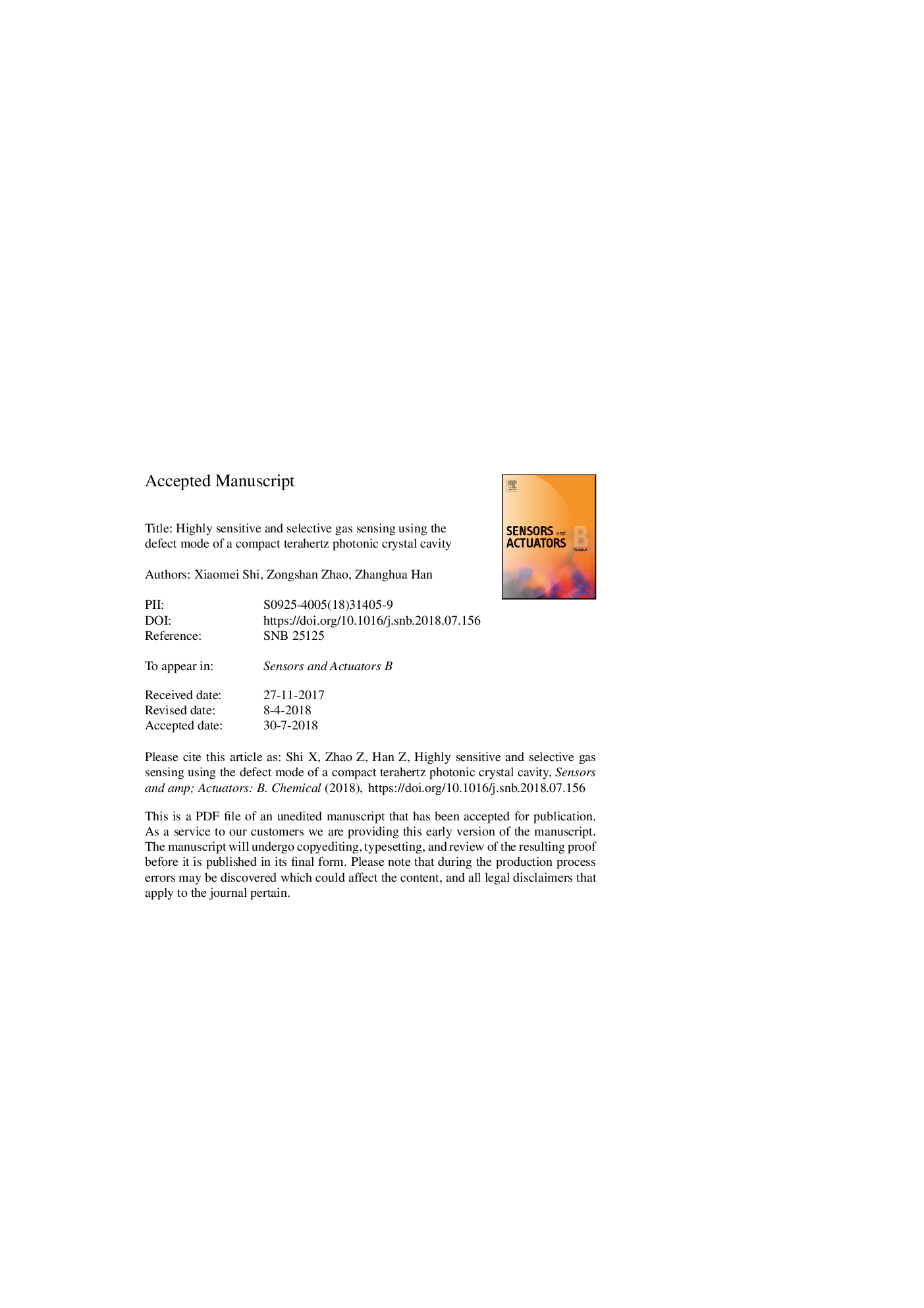| Article ID | Journal | Published Year | Pages | File Type |
|---|---|---|---|---|
| 7138650 | Sensors and Actuators B: Chemical | 2018 | 11 Pages |
Abstract
The photon energies corresponding to the pure rotational transitions of small polar compounds fall into the terahertz regime, which suggests a high potential of terahertz technology in gas detection, particularly for toxic gases. However, the weak dipole moments caused by pure rotational transitions severely limit the gas detectability at low concentration, leading to the requirement of a long gas cell. Here, we present a highly sensitive and selective detection method using photonic crystal cavity defect mode with the resonance tailored to the characteristic absorption peak of the target gas specimen. The cavity resonance will experience decaying only when the target gas is introduced, and then can be used to exclusively detect the target gas. Numerical calculations show that due to the high dependence of the defect mode transmittance on the specimen absorption at the same frequency, a toxic gas-hydrogen cyanide (HCN) with concentration of only 2âppm in air under the standard atmospheric pressure of 1âatm can be identified using a photonic crystal cavity with the overall length around 5âmm, two orders of magnitude shorter than the pipe gas cell used in the regular transmission method.
Related Topics
Physical Sciences and Engineering
Chemistry
Analytical Chemistry
Authors
Xiaomei Shi, Zongshan Zhao, Zhanghua Han,
